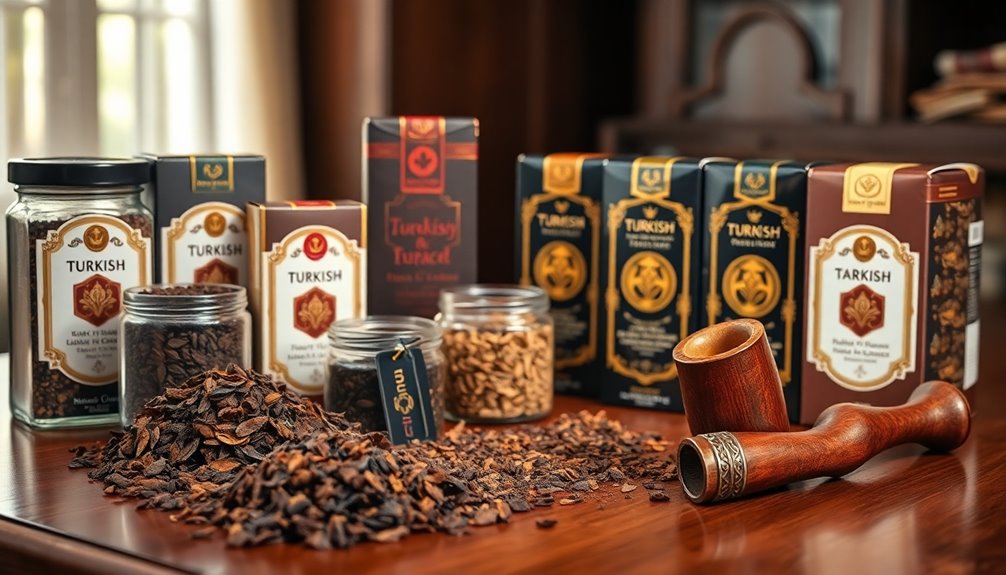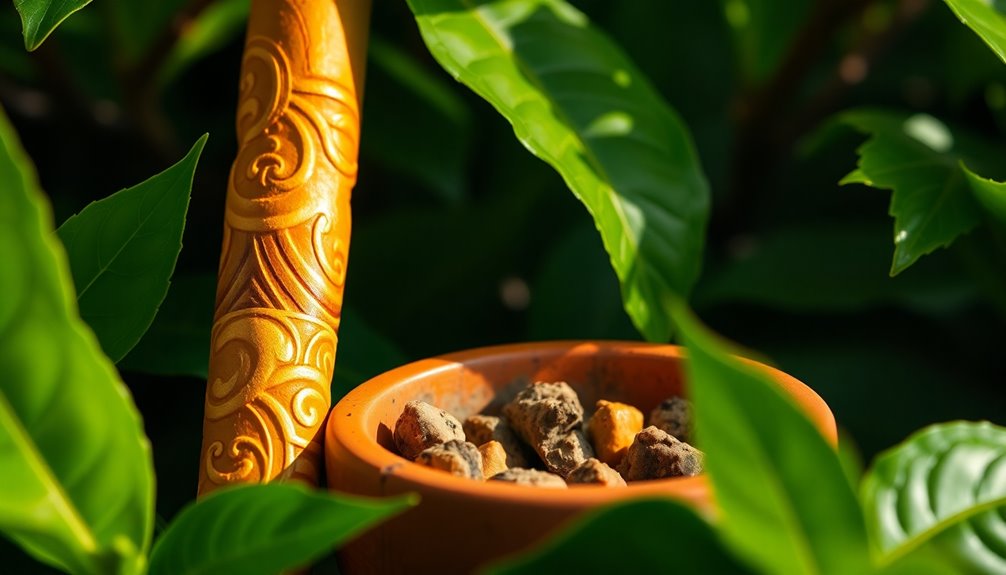When exploring Turkish tobacco brands, you'll find a range of flavors and qualities stemming from unique varietals like Izmir, Samsun, and Basma. Each varietal offers distinct profiles, with Izmir delivering nutty and spicy notes, while Samsun provides a smooth sweetness. The sun-curing process enhances these flavors and reduces nicotine content, making them appealing to many smokers. Popular brands often emphasize craftsmanship and local heritage, which resonate with niche markets. As consumer interest shifts toward artisanal and unique blends, you're in for a treat in discovering the vibrancy of Turkish tobacco. Immerse yourself in the nuances of this fascinating market!
Key Takeaways
- Popular Turkish tobacco brands include Tekel, which offers a variety of traditional blends, and Pinar, known for its quality and unique flavor profiles.
- The Izmir varietal is especially sought after for its nutty and spicy flavors, making it a favorite among connoisseurs.
- Samsun tobacco is recognized for its smooth, sweet flavor, appealing to those seeking a pleasant smoking experience.
- Emerging brands are focusing on artisanal blends, emphasizing craftsmanship and unique flavor experiences to attract modern smokers.
- Lesser-known varietals like Yenidge are gaining attention, reflecting evolving consumer preferences for diverse and authentic tobacco options.
Overview of Turkish Tobacco
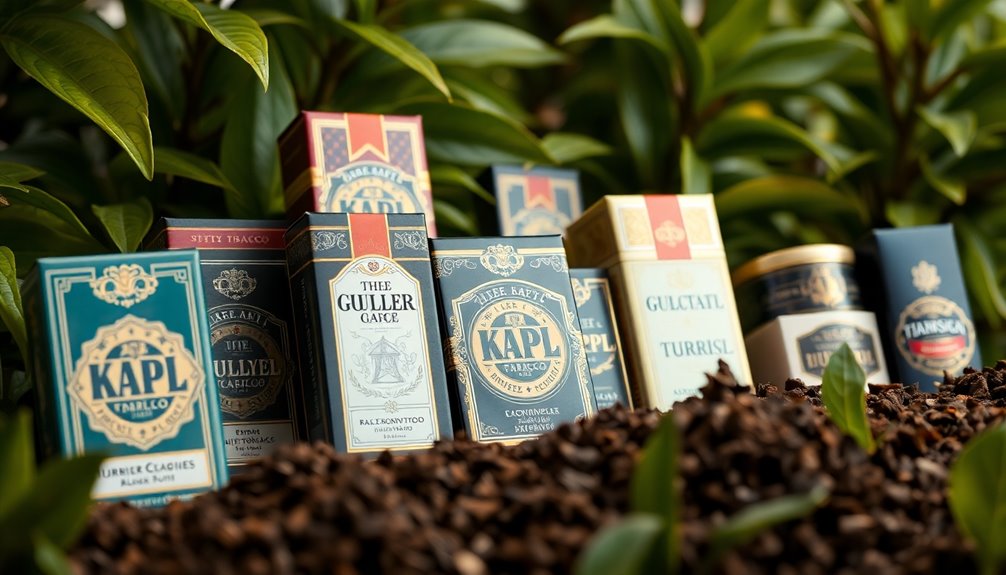
Turkish tobacco, with its unique characteristics, thrives in mineral-rich soils found in regions like Thrace and Macedonia.
Primarily cultivated in Turkey, Greece, and Bulgaria, it's renowned for the sun-curing process that results in low nicotine content and complex flavor profiles. This method enhances your smoking experience, allowing you to enjoy a rich array of tastes.
The three main varietals of Turkish tobacco—Izmir, Samsun, and Basma—each offer distinct flavors.
When you smoke Izmir, you'll notice its spicy notes; Samsun delivers a delightful sweetness; and Basma strikes a balance between sour and sweet. These diverse flavors make Turkish tobacco highly valued, whether you prefer standalone smokes or blending with other tobaccos.
However, the industry faces economic challenges.
Declining cigarette consumption and increasing regulatory pressures impact the viability of Turkish tobacco farming and export markets.
As a lover of tobacco, it's crucial to appreciate both the rich heritage of Turkish tobacco and the contemporary hurdles it faces. Understanding these aspects helps you fully appreciate the complexity and craftsmanship behind each puff.
Key Characteristics and Varietals
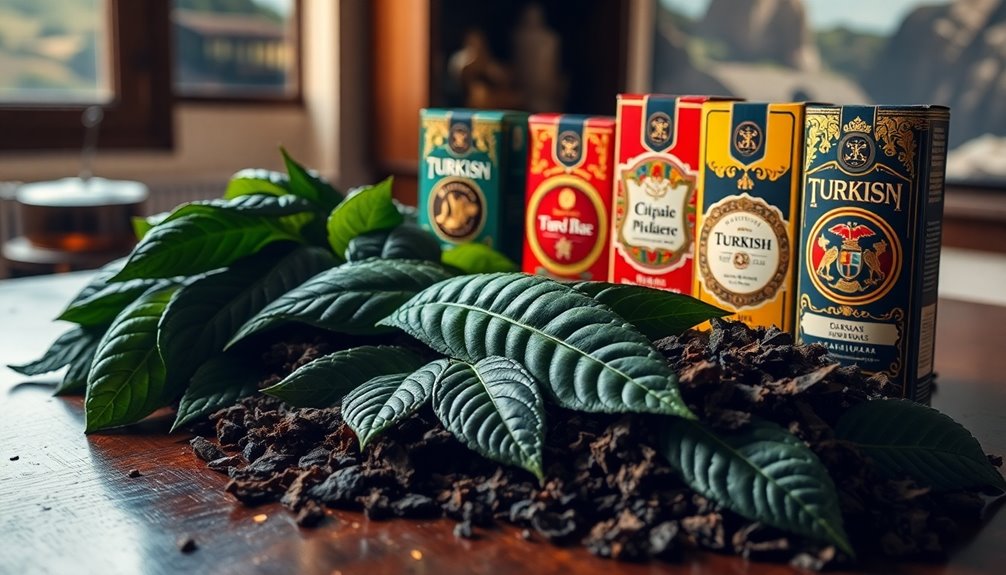
Three main varietals define the landscape of Turkish tobacco: Izmir, Samsun, and Basma. Each of these Oriental tobaccos offers unique characteristics that enhance your smoking experience.
Izmir, known for its nutty and spicy flavors, provides a rich, complex aroma that many enthusiasts appreciate. If you prefer something sweeter, Samsun is your go-to, delivering delightful sweetness that's hard to resist. On the other hand, Basma brings a blend of sour and sweet notes, coupled with low nicotine content, making it a lighter option.
Turkish tobacco stands out due to its high-quality Oriental leaves, cultivated in sandy, humid conditions that boost oil and sugar content. This results in a mellow, aromatic smoke that's less intense than fuller-bodied tobaccos.
The sun-curing process contributes to its flavor complexity while keeping nicotine levels low, making it a popular choice for blending. As you explore these varietals, remember that the economic viability of Turkish tobacco farming can be influenced by global smoking trends and regulations, affecting the availability of traditional blends in the market.
Enjoy discovering the rich flavors each varietal has to offer!
Cultivation and Curing Processes

The cultivation of tobacco in the historic regions of Thrace and Macedonia thrives due to their sandy soils and humid climates, creating the perfect environment for unique flavor development. You'll find that Turkish blends originate from plants that grow about three feet tall, with smaller leaves clustering together to minimize sun exposure. This guarantees peak growth conditions.
The sun-curing process is a hallmark of Turkish tobacco. Leaves are sewn together to retain moisture, which results in lower nicotine content and complex flavors. The three main varietals—Izmir, Samsun, and Basma—each bring distinct characteristics to the table:
| Varietal | Flavor Profile | Key Notes |
|---|---|---|
| Izmir | Aromatic nutty and spicy notes | Rich and flavorful |
| Samsun | Sweet flavor | Smooth and pleasant |
| Basma | Blend of sour and sweet tastes | Unique and balanced |
Ideal harvesting conditions and meticulous curing practices enhance the mellow, sweet, and slightly spicy notes found in high-quality Turkish tobacco. This meticulous approach makes these blends a favored choice among pipe smokers, delivering an experience you won't forget.
Flavor Profiles and Blending
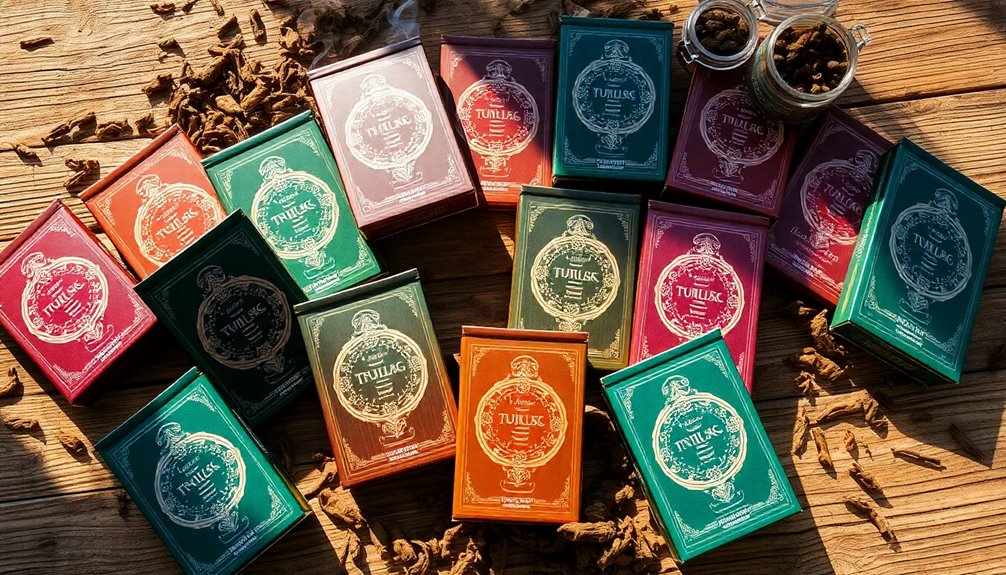
Building on the unique characteristics developed through meticulous cultivation and curing, the flavor profiles of Turkish tobacco varieties like Izmir, Samsun, and Basma stand out in the world of smoking.
Izmir delivers nutty, spicy notes that create a rich tapestry of taste. Samsun, on the other hand, provides a sweet, savory essence, making it a favorite among those who enjoy a touch of sweetness in their smoke. Basma enhances blends with its unique sour and sweet characteristics, bringing a delightful complexity to the mix.
The high oil content in Turkish pipe tobacco contributes to its ethereal flavors, reminiscent of an open-air spice market. This complexity makes it an ideal component for blending in Virginia/Oriental mixtures.
With floral and spicy notes, Turkish tobaccos engage your senses and elevate your smoking experience. When blended, they add unique character and depth to milder and medium-bodied profiles, creating a balanced smoking experience that appeals to both seasoned smokers and newcomers alike.
The sun-curing process also results in low nicotine levels, enhancing the mellow, sweet, and slightly spicy notes, catering to a wide range of smoking preferences.
Popular Turkish Tobacco Brands
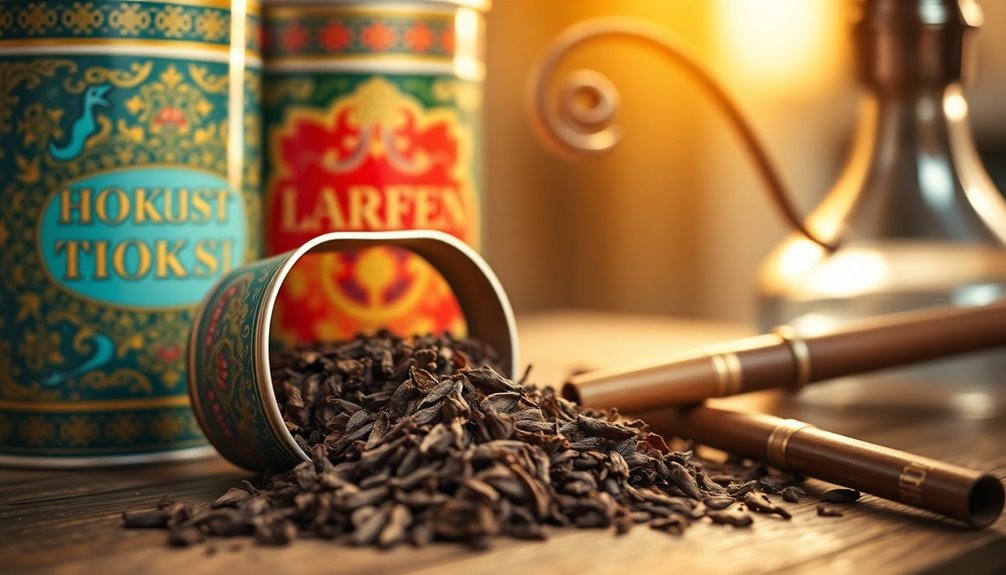
Several popular Turkish tobacco brands have gained recognition for their unique blends and flavor profiles, catering to a diverse audience of smokers.
If you're exploring pipe tobacco blends, you'll find a variety of options that stand out in the market:
- Cornell & Diehl: Offers blends like Bow-Legged Bear and Star of the East Flake, priced between $11.99 and $38.99.
- OHM: Features Turkish Yellow and Red varieties, available in 8 oz and 1 lb sizes ($7.69 for 8 oz, $14.22 for 1 lb).
- 4 Aces: Priced competitively between $1.49 and $15.99, making it accessible to a wide range of consumers.
- Cherokee: Known for its Turkish Bold Pipe Tobacco, with prices ranging from $12.99 to $62.99, showcasing its strength and formulation.
- Dunhill: Renowned for its premium offerings, providing a luxurious smoking experience.
These brands not only highlight the rich tradition of Turkish tobacco but also cater to varying preferences and budgets.
Economic Impact and Challenges
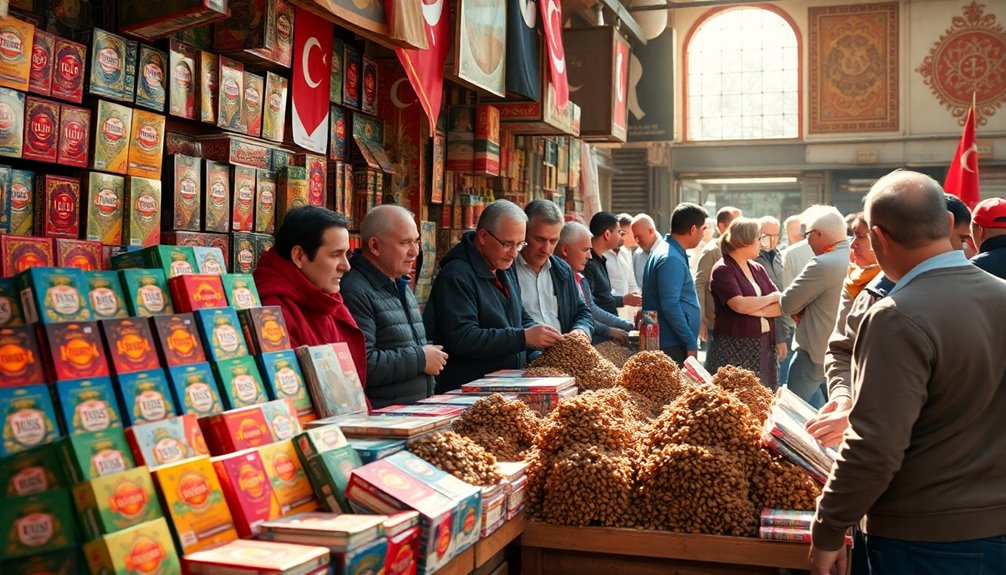
As you explore the economic landscape of Turkish tobacco, you'll notice that declining cigarette consumption poses a significant challenge for farmers.
This drop in demand complicates import and export processes, making it hard for local producers to maintain stability.
You'll see how these factors intertwine to create a precarious situation for the industry.
Declining Cigarette Consumption
The decline in global cigarette consumption is reshaping the landscape for Turkish tobacco producers, triggering economic challenges that ripple through the industry. As demand for Turkish Oriental tobacco, primarily used in cigarettes, plummets, thousands of farms face an uncertain future. This downturn not only threatens their livelihoods but also impacts Turkey's economy as a whole.
Here are some key issues at play:
- Decreased Demand: With fewer people smoking, the need for Turkish tobacco shrinks.
- Market Vulnerability: Farmers rely heavily on large cigarette companies for pricing, making them susceptible to market shifts.
- Political Regulations: New laws mandating local tobacco in Turkish products have strained export opportunities.
- Rising Costs: High shipping expenses and low crop yields complicate financial stability for producers.
- Economic Fragility: The combination of these factors risks the viability of the Turkish tobacco sector.
As these challenges mount, it's vital to reflect on how the industry can adapt to changing consumer habits and market dynamics while preserving the heritage of Turkish Oriental tobacco.
Import/Export Complications
With the decline in cigarette consumption impacting the Turkish tobacco market, import and export complications are becoming more pronounced. High shipping costs and low crop yields make it tough for small farmers to compete globally. Recent regulations requiring 30% local tobacco content in products limit export potential and create shortages, further straining the market.
The Aegean region, heavily reliant on tobacco farming, faces economic threats from decreasing global demand. Political disruptions and changing international relationships complicate business dealings, affecting pricing and availability. Farmers depend on large cigarette companies, leading to challenges with crop commissions and profitability.
Here's a closer look at the economic impact:
| Challenge | Impact on Tobacco Market |
|---|---|
| High shipping costs | Increased prices for exports |
| Low crop yields | Reduced supply for global market |
| Local content regulations | Limited export opportunities |
| Political disruptions | Uncertainty in pricing |
| Dependence on large companies | Vulnerability in profitability |
These factors collectively threaten the viability of Turkish tobacco farming, necessitating urgent attention to guarantee the sustainability of this critical agricultural sector.
Political and Historical Context
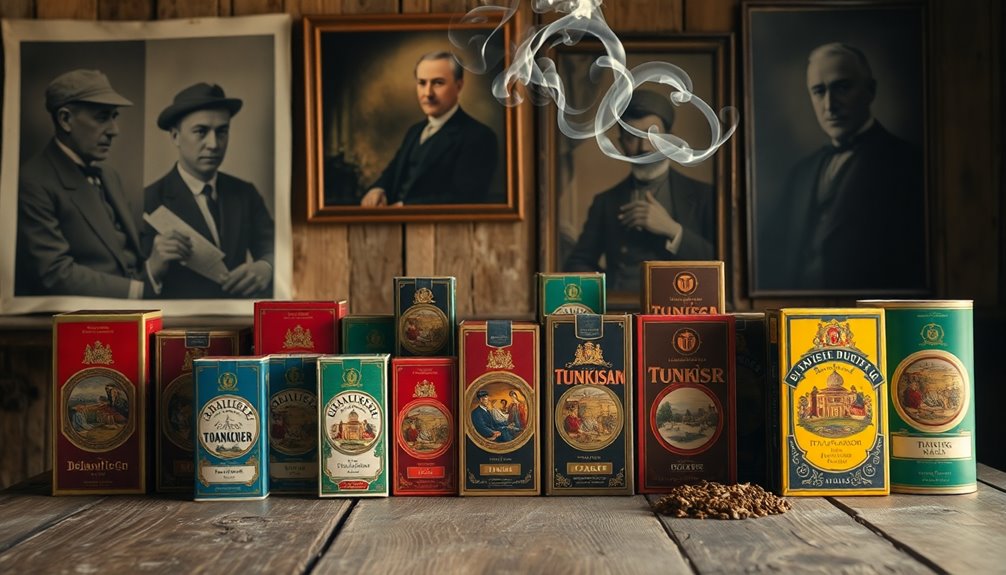
Steering through the intricate tapestry of Turkish tobacco's history reveals how deeply political and historical factors have shaped its journey.
You'll find that Turkish tobacco's introduction to American markets in the late 19th century greatly influenced its market landscape. However, events like the First World War disrupted trade, complicating the availability of products you might enjoy, such as pipe tobacco.
Consider these key points:
- The Ottoman Empire's influence established early cultivation practices.
- Recent laws in Turkey require a 30% inclusion of local tobacco in all products.
- Changing political climates affect business relationships between farmers and cigarette companies.
- Trade disruptions during World War I impacted distribution channels.
- Evolving perceptions of Turkish tobacco have roots in historical narratives.
These factors intertwine, shaping how Turkish tobacco is perceived and consumed today.
As you explore the various brands, keep in mind the political and historical context behind each puff. The journey of Turkish tobacco isn't just about taste; it's a reflection of centuries of change, struggle, and adaptation in a complex global landscape.
Community Engagement and Insights
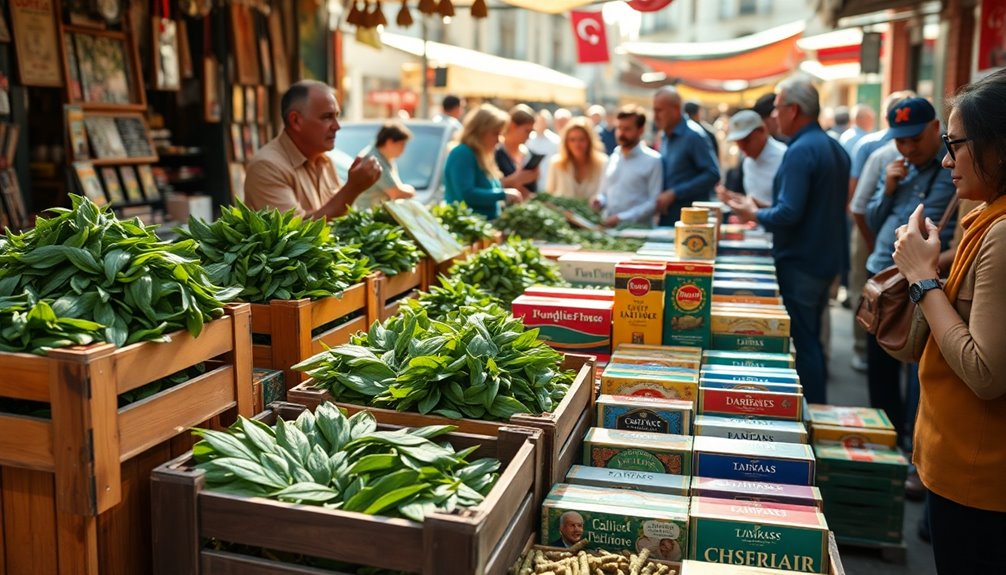
Engaging with the community around Turkish tobacco has uncovered a vibrant interest in lesser-known varietals like Yenidge and Xanthi. This growing curiosity shows that many of you're keen to explore beyond the familiar brands and investigate unique blends.
Industry professionals are stepping in, sharing valuable insights on blending techniques and current leaf availability. This exchange of knowledge is enriching your understanding of tobacco and its complexities.
Positive feedback from readers indicates a strong desire for detailed articles that highlight the distinctive flavor profiles of Turkish tobaccos. Active discussions within the community reveal how much you appreciate these unique characteristics and the blending potential they offer in various mixtures.
Moreover, there's a notable demand for consumer education initiatives focused on sourcing practices and the art of blending Turkish tobacco. By fostering this deeper appreciation, you're not just elevating your smoking experience; you're also contributing to a more informed community.
Engaging in these conversations and learning from each other helps everyone appreciate the intricacies of Turkish tobacco, encouraging a more adventurous approach to your blends.
Consumer Preferences and Trends
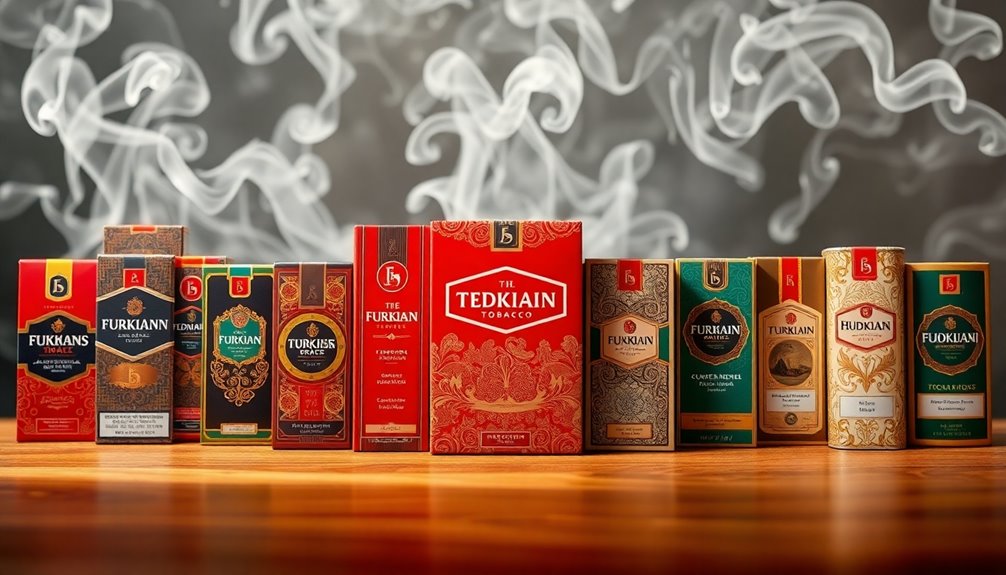
What drives your preferences when it comes to Turkish tobacco? If you're like many smokers, it's probably the unique flavors and experiences these blends offer. The distinct profiles of Turkish tobaccos, especially those containing Eight State Burley, make them stand out in the market.
Here are some trends shaping consumer choices:
- A preference for milder, aromatic blends that appeal to both beginners and seasoned smokers.
- An appreciation for the floral and spicy notes found in varietals like Izmir and Samsun.
- Growing interest among pipe smokers seeking unique flavors to enhance their smoking experience.
- A demand for quality blends with lower nicotine content.
- Curiosity about lesser-known varietals such as Yenidge and Xanthi.
These preferences reflect a shift in the market, driven by economic challenges and changing smoking habits.
As cigarette consumption declines, brands are innovating to cater to evolving tastes. By focusing on quality and flavor variety, Turkish tobacco brands are meeting consumer needs, allowing you to explore and enjoy a diverse range of options.
What's your favorite blend?
Future of Turkish Tobacco Market

As you explore the future of the Turkish tobacco market, you'll notice several shifts in consumer preferences and emerging trends.
However, challenges like declining demand and regulatory hurdles could impact producers notably.
Still, opportunities for growth in niche markets and unique flavor profiles might just be the key to revitalizing this sector.
Market Trends and Shifts
The future of the Turkish tobacco market is at a crossroads, shaped by both global trends and local challenges. For a long time, Turkey has been known for its unique tobacco blends, but now, you'll see shifts that could redefine the landscape. Understanding these trends is imperative for anyone interested in the market.
- Declining global cigarette consumption is reducing demand for traditional products.
- New political regulations, like the 30% inclusionary law, complicate export potential and pricing.
- High shipping costs and low crop yields threaten the economic viability of farming.
- Changing consumer preferences are steering interest toward healthier alternatives.
- Community engagement and consumer education are essential for fostering appreciation of local tobaccos.
These factors create a complex environment. As you navigate this market, it's important to remain aware of how these trends interplay with traditional practices.
While the challenges are significant, there's also potential for growth through innovative marketing and consumer education. By adapting to these shifts, you can help shape a vibrant future for Turkish tobacco, ensuring it remains a cherished choice for many years to come.
Challenges Facing Producers
Facing numerous challenges, producers of Turkish tobacco must navigate a complex landscape that threatens their economic viability. A global decline in cigarette consumption is greatly impacting demand for this essential export crop.
As a farmer, you're dealing with high shipping costs and low crop yields due to tough farming conditions. This tough situation is compounded by your dependency on large cigarette companies for pricing and commissions, leaving you with little bit of control over your profits.
Recent regulations, like the 30% inclusionary law mandating local tobacco in Turkish products, complicate your export potential and market dynamics. You may find it increasingly challenging to source and distribute Turkish tobacco effectively due to import/export issues, particularly as a small producer.
Additionally, fluctuating political climates and historical trade disruptions have strained business relationships, making it harder for you to maintain stable operations.
These challenges require you to be adaptable and resourceful. Without addressing these issues, the future of Turkish tobacco production might be at risk, affecting livelihoods and the overall market.
It's clear that finding solutions is vital for sustaining this important sector.
Future Growth Opportunities
Numerous growth opportunities await the Turkish tobacco market as global trends shift toward premium and specialty products.
You'll find that consumers are increasingly interested in unique flavor profiles and artisanal blends, which can boost the appeal of Turkish offerings.
Here's what to look forward to:
- Cultural Significance: Rising awareness of Turkish tobacco's rich history may attract niche markets seeking authentic experiences.
- Innovative Techniques: Advances in cultivation and processing could enhance yield and quality, making Turkish tobacco more competitive.
- Export Expansion: New markets in Asia and Europe can provide fresh revenue streams as global consumption patterns evolve.
- Collaboration: Partnerships between local farmers and international companies can improve market access and sustainability.
- Artisanal Focus: Emphasizing artisanal blends can cater to the growing demand for premium products.
In this evolving landscape, embracing these future growth opportunities will be essential for Turkish tobacco producers.
Frequently Asked Questions
What Is the Finest Turkish Tobacco?
The finest Turkish tobacco often includes renowned varietals like Izmir, known for its aromatic, nutty flavors, and Samsun, which offers a sweet, dark leaf.
You might also enjoy Basma, celebrated for its unique sour and sweet taste.
These tobaccos, cultivated in mineral-rich soils, provide mellow, sweet, and slightly spicy notes.
The sun-curing process further enhances their flavor profiles, making them highly sought after for their smoothness and distinctive room notes.
What Is the Most Popular Cigarette Brand in Turkey?
Have you ever wondered which cigarette brand dominates the market in Turkey? Marlboro's the most popular choice among smokers, consistently leading in market share.
You might also hear about Parliament, known for its smooth taste, or Lark, which attracts younger smokers.
Despite strict advertising regulations, these brands thrive, reflecting Turkey's high smoking prevalence.
If you're exploring options, these names are definitely worth considering for their distinct flavors and loyal following.
Is Turkish Tobacco Good Quality?
Yes, Turkish tobacco's known for its exceptional quality.
You'll find it characterized by rich, aromatic flavors that come from varietals like Izmir and Samsun. The sun-curing process enhances its mellow sweetness while keeping nicotine levels low, making it appealing whether you're a seasoned smoker or a beginner.
Plus, the meticulous production methods and fertile soils contribute to its premium status, ensuring a satisfying smoking experience every time you indulge.
Which Country Produces the Best Quality Tobacco?
Imagine a sun-soaked field, where rich soil nurtures vibrant tobacco plants, each leaf whispering tales of flavor.
When it comes to the best quality tobacco, you might find that the answer varies. Countries like Cuba, with its lush landscapes, produce renowned, flavorful leaves.
Meanwhile, Turkey offers a unique blend of aromatic profiles.
Ultimately, the best tobacco for you depends on your taste preferences and the experience you seek in every puff.
Conclusion
As you explore the rich tapestry of Turkish tobacco, you'll find a blend of history, culture, and craftsmanship that's hard to match. Each puff carries the legacy of centuries, inviting you to savor its unique flavors. With a growing appreciation for these brands, the future looks bright. So, why not dive deeper? Embrace the experience, and let the allure of Turkish tobacco captivate your senses, one exquisite leaf at a time.
